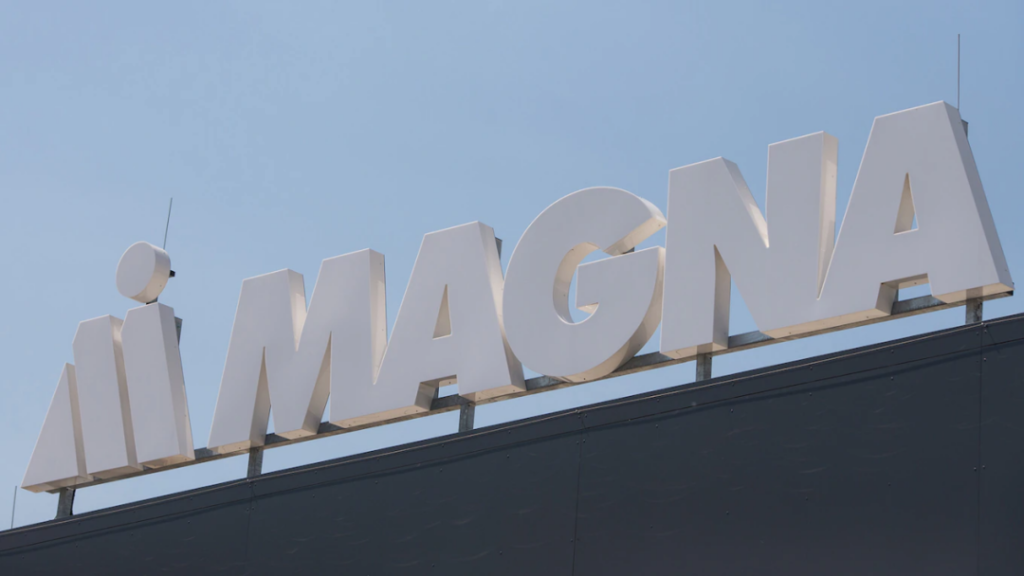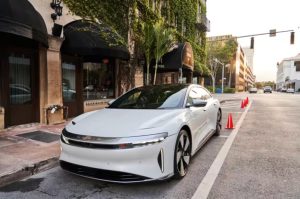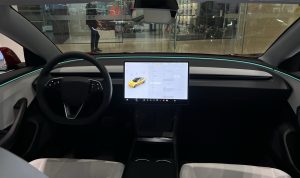Magna: The Manufacturer Behind Numerous Automotive Giants
16 min read

“Magna International Inc.” is a globally operating automotive parts manufacturer headquartered in Aurora, Ontario, Canada. The company was established in 1957 and has played a significant role in the automotive and transportation industry for many years.
Magna International is a comprehensive automotive parts supplier that combines design, engineering, manufacturing, and assembly. Its wide range of products includes chassis systems, powertrains, body and structural systems, seating systems, electronic systems, and more. The company’s clients include numerous globally renowned automakers who rely on Magna to provide high-quality components for their vehicles.
Magna International’s business covers the entire automotive production process, from component design and engineering to manufacturing and assembly, ultimately delivering to automakers. This makes Magna an indispensable part of the automotive supply chain.
While Magna International doesn’t have its own car brand, it holds a significant position and influence in the automotive industry. By providing high-quality components, advanced technologies, and solutions, Magna has made important contributions to the development of the global automotive manufacturing industry. Whether in traditional internal combustion engine vehicles or in the fields of electric and autonomous driving, Magna International plays a key role in shaping the future of the automotive industry.
- The Giant Behind Automotive Manufacturers
When mentioning Magna, many people might not be familiar with this company, but its low-profile reputation doesn’t diminish its strength in the automotive field.
Readers who are attentive to the automotive industry may recall a remarkable event from years ago: in 2013, the domestically produced Qoros 3 sedan achieved an astonishing result in the Euro-NCAP (European New Car Assessment Programme) crash test, securing the second-highest score in the history of the test (only surpassed by the Volvo V40, ahead of countless global car models).
For the Chinese automotive industry, which at that time had only a few decent domestic passenger cars, this achievement was akin to “launching a satellite.” It’s worth noting that prior to this, the domestically produced sedan that many Chinese people took pride in—Zonda Zun Chi—received only one star in the Euro-NCAP crash test, and was disparaged by European media as “scrap metal from China.” Even a Landwind vehicle received a score of zero, becoming the “worst score in the 20-year history of crash tests,” according to German media.
Therefore, when the Qoros 3 achieved its outstanding result, Chinese people were not only delighted by the progress made by domestic cars, but also surprised by the technical capabilities of Chery Group, the parent company of Qoros. However, in reality, the entire system engineering design of the Qoros 3 was led by Magna, who was entrusted by Chery.
Magna not only led the R&D and design of the Qoros 3, but also, for instance, the first-generation X3, BMW’s first city SUV, has nothing to do with BMW. The R&D and production of the first-generation X3 were both completed by Magna’s subsidiary, Magna Steyr. It can be said that BMW simply added its own logo. Mercedes-Benz’s proud “4Matic” all-wheel drive system was also developed by Magna Steyr for the first generation. Additionally, numerous renowned cars such as the Aston Martin Rapide four-door coupe, Mercedes-Benz G-Class, Mercedes-Benz M-Class, Peugeot RCZ, Jeep Grand Cherokee, BMW 5 Series, Toyota Supra, Jaguar I-PACE and E-PACE, and Land Rover, either are manufactured by Magna or are developed and produced entirely by Magna.
Due to its powerful capabilities in design, R&D, and large-scale contract manufacturing, Magna is often referred to as the “Contract Manufacturing Emperor” and the “Foxconn of the Automotive Industry.” However, Magna’s core competence lies in its ability to produce and supply automotive components.
Magna is the most diversified automotive components supplier globally, with its products and technologies covering almost all sub-markets of automotive components except for tires and glass. For instance, many current vehicle models’ dual-clutch transmissions, electronic control systems, safety systems, locking systems, seats, rearview mirrors, and more, all come from Magna.
According to the 2022 Global Top 100 Automotive Suppliers released by “Automotive News,” Magna ranks fourth, following Bosch, Denso, and Aisin.
In 2022, Magna’s global sales revenue reached $37.8 billion, ranking 392nd in the Fortune Global 500 list, with a global workforce of 343 factories, including 65 in China, employing over 170,000 people, with around 25,000 employees in China.
However, this enormous and capable Magna, which spans more than 60 years of history, started out as a small workshop producing simple molds.
- Birth and Rise of Magna
Great accomplishments are always led by exceptional leaders, and the greatness of Magna stems from an Austrian named Frank Stronach.

In 1932, Stronach was born into a poor working-class family in the southeastern Alps of Austria. At that time, the Great Depression was wreaking havoc in the capitalist world, and a few years later, Austria was engulfed in World War II. Stronach had a difficult upbringing following his parents, struggling to survive. At the age of 14, he had to drop out of school and become an apprentice for mold-making at a factory in Weiz, Austria, often subsisting on cornmeal porridge.
After World War II, as the capitalist world economy recovered, the growing Stronach developed dreams of chasing wealth and seeing the world. He applied for work visas from four countries, and only Canada granted him one. At the age of 21, armed with $200 and a suitcase, he headed to Canada in search of gold.
Stronach initially found a job in a hospital basement peeling potatoes and washing dishes. Later, he worked for a company that produced parts for fighter planes, but he was let go after only a few months. When he saw Ford Motor Company was hiring toolmakers, he applied, but he was rejected due to being too young and inexperienced.
After facing multiple setbacks and enduring hardships, in 1955, Stronach found work in a small tool shop run by an Austrian compatriot in Toronto. His previous experience as a toolmaker quickly made him stand out, gaining the boss’s favor and earning him a promotion to operations manager, and later becoming a partner. This gave him the confidence he needed in life.
In 1957, after nearly three years of hard work and accumulating funds, Stronach founded a mold-making company called Multimatic, which had only one employee (himself). Multimatic was established in an old house, occupying an area roughly the size of four garages, with mostly second-hand equipment that Stronach had acquired. Yet, it was in this unassuming place that the foundation for Magna was laid.
Although the company was small, Stronach had some luck. Not long after opening, he received an order from American Standard for producing molds for sink brackets. Stronach completed this order to American Standard’s satisfaction in just three weeks, earning their trust. Subsequently, American Standard provided more orders. In the company’s first year of operation, Stronach made a profit of $20,000, and the company had grown to employ 10 people.
As the company’s business flourished, Multimatic expanded into more fields. In 1959, Stronach received an order from General Motors to produce sun visor brackets, marking the company’s first automotive component order.

Due to having only one lathe, Stronach and his employees worked 16 hours a day, 7 days a week, continuously, to deliver the product to General Motors on time. This order not only allowed Multimatic to secure more orders from companies like GM, Ford, and Chrysler, but also propelled them into a prosperous era of the North American automotive industry.
In the late 1950s, the United States was experiencing a period of great prosperity, with rising incomes and population growth leading to a rapid increase in car sales and the automotive parts business.
Capitalizing on the opportunity presented by American automotive giants, Multimatic achieved sales of $500,000 in 1961. However, even greater fortune awaited Multimatic.
In 1965, the historic Canada-US Automotive Trade Agreement was signed, abolishing tariffs on automobiles and parts and establishing a free trade zone for automobiles between the two countries. With the removal of tariff barriers, automotive trade between the US and Canada surged, and American carmakers began establishing factories in Canada. Additionally, as compensation for Canada’s automotive industry, a certain proportion of Canadian components were required in cars exported from the US to Canada.
Naturally, Multimatic didn’t miss this opportunity. While the Canadian business was flourishing, in 1965, they also started exporting products to the US. With the growth of the North American automotive industry, by the late 1960s, Magna’s revenue had exceeded $4 million.
In 1969, due to complementary business factors, Multimatic merged with defense company Magna Electronics. Following some initial personnel and business challenges after the merger, in 1971, Stronach won control of the board of directors and shifted the company’s focus back to automotive component business. In 1973, he renamed the company: Magna International.
The Secret to Rapid Rise
Over the course of about a decade, from a small workshop to a company with annual revenue in the millions of dollars, Magna’s rapid rise was not only influenced by the times but was also closely tied to Stronach’s business philosophy and methods.
As Multimatic’s mold-making business grew rapidly, Stronach noticed that one capable foreman under him had thoughts of leaving to start his own business. Stronach understood that creating a larger stage and greater rewards for talent was essential to retain them. Consequently, he quickly developed the foreman into a partner, handed over a newly opened factory for him to manage, and granted him one-third ownership and a share of the profits of the new factory.
This approach yielded positive results; the foreman was highly motivated, working tirelessly, and Multimatic’s performance naturally improved.
Later on, Stronach extended similar arrangements to more talented employees, giving them leadership roles in new factories and partial ownership. As a result, Frank soon had more and more new factories, and with the enthusiasm of factory managers fully harnessed, the company’s overall performance surged forward unstoppably.
Stronach’s partnership model was later recognized by Harvard Business School as the “secret recipe for Magna’s success.”

Not only was Stronach generous with the management team, but in the day-to-day management and operation of the company, he was candid and generous with the employees. He never concealed order profits from his subordinates and would proactively use profits as bonuses to motivate employees to create more value. This approach earned him the trust and support of many employees.
After the establishment of Magna International, Stronach continued this culture of sharing company profits. In 1976, Magna introduced an employee stock ownership and profit-sharing plan. Frank believed that aligning management, employees, and investors in the same direction would make the company more productive and competitive.
This initiative proved to inject strong momentum into the company’s rapid development. In 1970, the company’s revenue was $6.5 million, but by the end of the 1970s, performance had reached $100 million.
In a speech in 2023, Stronach summarized his philosophy of “fair business” and profit-sharing model (20% for shareholders, 10% for employees, 6% for management, 2% for social responsibility, with the remainder allocated to taxes, research and development, and reinvestment), which he believed had accelerated Magna’s growth.
He stated that after employees started participating in profit sharing at Magna, the company’s revenue grew by 60% in the first year, 100% in the second year, and 200% in the third year.
“Employees essentially became partners of the company. Knowing that they could share in the profits, they had great motivation to produce better products at more favorable prices.”
He mentioned that his only regret was not redistributing more money to the employees.
04 The Empire of Auto Parts
The 1970s and 1980s were a period of explosive growth for Magna. During this time, Magna transitioned from merely producing orders to introducing many revolutionary products and technologies, thereby entering various segments of the auto parts industry.
In 1973, the second oil crisis prompted car manufacturers to use lighter plastic components in place of metal parts to reduce vehicle weight and save energy.
Using Uniroyai’s Reaction Injection Molding technology, Magna produced large polyimide parts that were much lighter than mature thermoplastic molded products. Additionally, the lower temperature and pressure of the manufacturing process allowed for the use of cheaper aluminum molds. Magna collaborated with Uniroyai to establish Polyrim, its first plastic front bumper production division.
The first vehicle model to feature a Magna plastic bumper was the renowned Chrysler K-Car. The K-Car was part of Chrysler’s $1 billion investment in developing the K-platform. At the time, fuel-efficient Japanese cars were causing American car manufacturers to struggle, and Chrysler was on the verge of collapse. The introduction of the K-platform and the lightweight bumper produced by Magna played a vital role in saving Chrysler from bankruptcy.
In 1978, Magna introduced the revolutionary V-Ribbed Belt Drive System. Compared to the multi-belt systems commonly used at the time, the single ribbed belt system was simpler, more space-efficient, and cheaper to produce. These features made the single ribbed belt drive system particularly suitable for small cars with transverse engine layouts, and Magna received numerous orders as a result.
In the mid-1980s, Magna partnered with Grammer Seating Systems to develop the “Foam-in-Place” seat manufacturing process. This new process was significantly different from the traditional “Cut-and-Sew” seat manufacturing method. The Foam-in-Place process integrated the internal framework and padding into a single molded piece, eliminating the need for post-sewing shaping. This new process not only increased seat production efficiency but also reduced costs, making Magna a top supplier of seats at that time.
Magna also collaborated with Chrysler to develop an integrated child safety seat. This innovation was later recognized by the Smithsonian Institution as one of the most innovative inventions of the 1980s.

In the midst of numerous technological breakthroughs in the 1980s, one of Magna’s most significant advancements was the technology for stamping large body panels for vehicles. Initially, when Magna received an order from Renault, they didn’t possess all the required technology. However, Renault believed that Magna, known for never disappointing its customers, wouldn’t fail them. Magna’s engineers were also eager to take on the challenge. Ultimately, with the efforts of their engineers, Magna successfully completed the order. This marked Magna’s entry into the realm of manufacturing Class A stampings, laying a crucial foundation for its future development.
Another major development for Magna in the 1980s was the establishment of a specialized department dedicated to developing modular automotive system products. In order to help automakers reduce production costs and enhance efficiency, Magna integrated different components into a system. For example, they created a door module that combined wiring, latches, locks, and other parts, providing it as a complete unit to automakers. This advanced approach gradually transformed Magna from a simple automotive parts manufacturer into a diversified automotive platform system supplier.
By the late 1980s, Magna was producing over 5,000 types of components, with annual sales exceeding $1 billion, showcasing considerable strength. Frank Stronach even told the Chairman of General Motors, “Your main business is selling cars, let Magna build cars! Magna can manufacture higher-quality cars for GM at a lower cost.”
However, just as Magna’s success was soaring, an event occurred that brought the company to the brink of bankruptcy.
After the crisis, global expansion:
To support its rapid expansion and R&D investments, Magna took on substantial loans from banks in the 1980s. However, on October 19, 1987, a global stock market crash known as “Black Monday” occurred.
Following the stock market crash, global stock markets collapsed, company stocks plummeted, and car sales dropped dramatically. Magna, which had been rapidly expanding through loans, was facing the risk of a funding crisis. Bankruptcy commissioners even came knocking on Frank Stronach’s door, demanding that he relinquish control.
At this critical juncture, Stronach managed to convince the Big Three automakers in Detroit to pressure the banks not to let Magna go bankrupt. In reality, Magna’s overall situation wasn’t as dire as it seemed. They had stable customers, loyal employees, and efficient production processes. The banks had no choice but to temporarily spare Magna.
With this breathing space, Magna desperately improved its cash flow. They extended payment terms for suppliers, shortened the customer payment cycle, sold off previously invested suburban land and some fixed assets, and ultimately paid off the bank loans by 1991.
After the stock market crash, Stronach vowed to reduce Magna’s reliance on bank loans and build up the company’s cash reserves. This change was crucial; it not only helped Magna smoothly navigate the 2008 global financial crisis but also enabled them to extend assistance to the crisis-stricken General Motors.
By 1992, Magna was back on track. With the end of the Cold War and the rise of economic globalization, along with their own business growth, expanding into larger markets became Magna’s new direction.
Magna set its sights on Europe, the birthplace of automobiles, focusing on acquisitions. Their targets were companies with unique technology patents or components that Magna couldn’t produce.
Magna initiated a series of acquisitions in Europe, including manufacturers of airbags and steering wheels, mirror system companies, plastic exterior component companies, engine and transmission companies, and more.
Among these acquisitions, the most significant was Magna’s acquisition of Steyr-Daimler-Puch in 1998. Steyr-Daimler-Puch was a major vehicle supplier for the Austro-Hungarian army during World War I. It later became an OEM for many well-known global car models. Not only did they design and manufacture entire vehicles, but they also produced components such as transmissions, engines, and four-wheel-drive systems.
The acquisition of Steyr-Daimler-Puch greatly expanded Magna’s scope of business, providing them with comprehensive capabilities in vehicle development and OEM manufacturing. This was a pivotal factor in earning Magna titles such as the “King of OEMs” and the “Foxconn of the Car Industry.” For reference, in 2017 alone, Magna’s OEM business generated $3 billion in revenue. This is why Magna is often referred to as the “world’s largest automotive manufacturer without its own brand.”

In addition, in 2016, Magna acquired the German company Getrag, which had over 80 years of history and specialized in transmission systems. This acquisition significantly strengthened Magna’s engineering and manufacturing capabilities in the powertrain systems field.

Now, some readers might wonder: Since Magna has the capability for both complete vehicle production and comprehensive component manufacturing, why doesn’t it produce its own branded cars?
The answer is quite simple: it’s a matter of interests. Should Magna be a partner or a competitor to car manufacturers? Which role would bring more profits to the company? Magna needs to weigh these options.
In reality, this question has already been answered. During the 2009 financial crisis, news of General Motors’ impending bankruptcy sent shockwaves around the world. To salvage its important partner, Magna signed an agreement with GM to acquire Opel, a brand under GM.
Although Magna’s move was to provide a lifeline to their partner rather than to start a car brand, the news still caused panic among car manufacturers. The Volkswagen Group immediately announced its intention to terminate all contracts involving confidential technology cooperation with Magna. Eventually, GM abandoned the sale plan, and Volkswagen and Magna reconciled.
While Magna was conducting numerous acquisitions in Europe during the 1990s, they didn’t overlook the Eastern market in China. In 1996, Magna established its first joint venture in China, Shanghai Magna Automotive Seat Co., Ltd. After that, Magna gradually expanded its presence in China, establishing businesses in areas such as body, chassis, exteriors, powertrain systems, electronics, mirrors, locks, and complete vehicle engineering design. This led to the formation of companies like Magna Steyr, Magna Powertrain, Magna Mirrors, and Casma Star Bridge Automotive Systems. These businesses now contribute billions of dollars in revenue to the Magna Group each year.
06 Embracing the Electric Wave
Magna began preparing for the automotive industry’s electrification transition quite early. In the 1980s, they achieved a significant breakthrough in key components of sodium-sulfur batteries, accelerating the mass production process of this type of battery. Shortly thereafter, Magna introduced its first electric box van, but due to being ahead of its time, it failed to capture the interest of partner manufacturers and thus didn’t go into mass production.
However, Magna did not relax its efforts in the field of electrification. Over the past decade or so, they have developed a series of electrified products, including complete vehicles, electric motors, inverters, control software, and more, covering various powertrain architectures such as mild hybrids, plug-in hybrids, and pure electric vehicles. For example, the Ford Focus Electric, launched in 2011, was a collaborative effort between Magna and Ford; Magna also provided the rear axle system for Volvo’s V60 and S60 plug-in hybrid models; Magna’s Chinese joint venture, Magna Powertrain China, has already mass-produced over 150,000 highly integrated three-in-one electric drive systems for Volkswagen’s MEB platform…

In May of this year, Magna hosted its first China Electric Mobility Experience Day event, showcasing its impressive technological capabilities and strengths in the field of electrification.
For instance, Magna’s hybrid systems and plug-in hybrid systems can achieve over 30% fuel efficiency improvement under WLTP conditions. Based on Magna’s design philosophy of platformization, modularity, and scalability, these systems can be upgraded from conventional to new energy power without altering the original space of a fuel-powered vehicle. This undoubtedly appeals to many OEMs that lack hybrid technology and are urgently seeking transformation and upgrading.
Equally noteworthy is Magna’s technology in the pure electric domain. Magna’s eBeam electric vehicle axle is compatible with the suspension and braking systems of existing trucks. This allows automakers to swiftly transition from traditional power to electrification without redesigning their current truck platforms, saving significant time and costs.
Considering Magna’s high market share in the light truck, light commercial, and pickup segments, it’s foreseeable that Magna holds a significant advantage in the commercial vehicle electrification field. Reportedly, many commercial vehicle manufacturers are already engaged in collaboration with Magna.
Beyond a diverse, flexible, modular range of electrification products and technical support, Magna’s collaboration with BAIC New Energy has expanded its business into high-end electric vehicle platform engineering services and vehicle manufacturing. The BAIC BluePark Magna Manufacturing Base is Magna’s sole complete vehicle manufacturing facility aside from its factory in Graz, Austria.
From this perspective, Magna’s ambition in China is evident, as it aims to replicate its contract manufacturing business from Europe into the flourishing Chinese electric vehicle market. For some of China’s emerging automakers lacking complete vehicle engineering capabilities, this is certainly good news, as partnering with Magna means “PPT car making” is no longer just a joke.
Of course, while Magna, the “Contract Manufacturing Emperor,” is lowering the threshold for car manufacturing, it is also expected to continue playing the role of a giant behind automakers in the era of electric vehicles.



